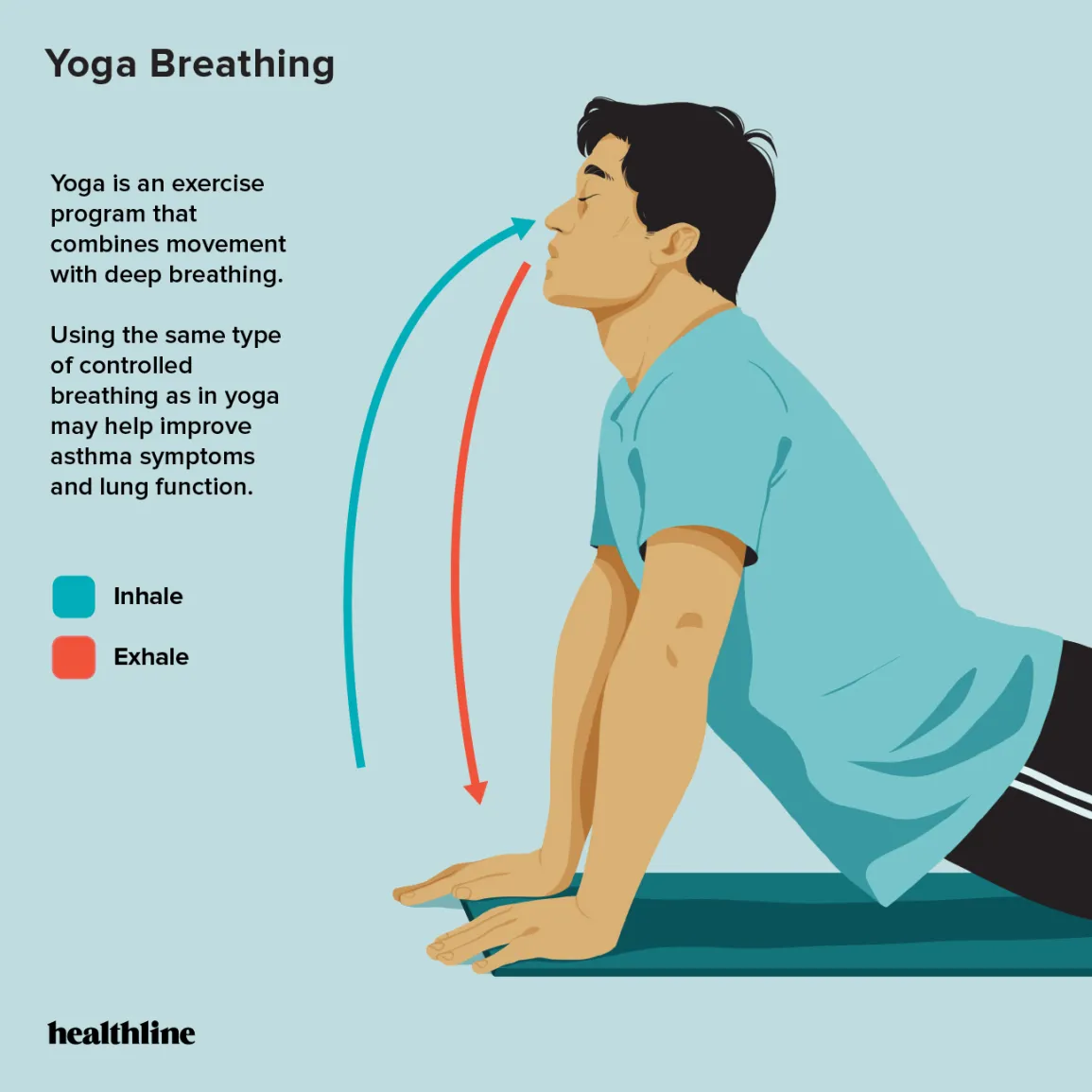Health
Benefits Of Breathing Exercises: How They Can Improve Your Physical And Mental Health?

Breathing Exercises – We often take breathing for granted, but it is a crucial component of our overall health and wellbeing. By practicing certain breathing exercises, we can improve our physical and mental health in a variety of ways.
This article will explore the benefits of breathing exercises and provide a step-by-step guide on performing some of the most effective exercises.
What are Breathing Exercises?
Breathing exercises, also known as pranayama in the yogic tradition, are techniques that focus on regulating and controlling the breath.
There are many different types of breathing exercises, each with its own unique benefits. Some focus on slowing down the breath and promoting relaxation, while others aim to increase oxygen intake and improve lung capacity.
The Benefits of Breathing Exercises
Breathing exercises have been shown to have numerous benefits for both physical and mental health. Here are just a few of the ways that practicing these exercises can improve your overall wellbeing:
1. Reduce Stress and Anxiety
One of the most well-known benefits of breathing exercises is their ability to reduce stress and anxiety.
Focusing on the breath and slowing it down can activate the parasympathetic nervous system, which promotes relaxation and calmness. This can be especially helpful for individuals who struggle with anxiety disorders.
2. Improve Lung Function
Breathing exercises can also improve lung function and increase oxygen intake. This can be especially helpful for individuals with respiratory conditions such as asthma or COPD.
By practicing deep breathing exercises, we can improve the elasticity of the lungs and increase the amount of oxygen we take in with each breath.
3. Boost Immune Function
Breathing exercises have also been shown to boost immune function by increasing the production of immune cells in the body. This can help protect against infections and diseases and improve overall health and vitality.
4. Enhance Focus and Concentration
By focusing on the breath and regulating it, we can improve our ability to concentrate and focus. This can be helpful for individuals who struggle with ADHD or other attention-related issues.
5. Improve Sleep Quality
Breathing exercises can also improve sleep quality by promoting relaxation and reducing stress and anxiety. This can be especially helpful for individuals who struggle with insomnia or other sleep-related disorders.
How to Perform Breathing Exercises?
Now that we’ve explored some of the benefits of breathing exercises, let’s take a look at some of the most effective techniques and how to perform them.
1. Deep Breathing

Deep breathing is one of the simplest and most effective breathing exercises. To perform deep breathing, sit or lie comfortably and place one hand on your belly and the other on your chest.
Take a slow, deep breath in through your nose, allowing your belly to expand as you inhale. Hold the breath for a few seconds, then exhale slowly through your mouth, allowing your belly to deflate as you exhale.
Repeat this process for several minutes, focusing on the sensation of the breath moving in and out of your body.
2. Alternate Nostril Breathing
Alternate nostril breathing is a yogic technique that balances the brain’s two hemispheres and promotes relaxation.
To perform this technique, sit comfortably and use your right hand to close your right nostril with your thumb.
Inhale deeply through your left nostril, then use your ring finger to close your left nostril and exhale through your right nostril.
Inhale through your right nostril, then use your thumb to close it and exhale through your left nostril. Repeat this process for several minutes, focusing on the sensation of the sensation of the breath moving in and out of your body.
3. Box Breathing
Box breathing is a technique that involves inhaling, holding the breath, exhaling, and holding the breath again in a specific pattern.
To perform box breathing, sit comfortably and inhale deeply through your nose for four seconds. Hold your breath for four seconds, then exhale slowly through your mouth for four seconds.
Hold the breath again for four seconds, then repeat the cycle for several minutes.
4. Lion’s Breath
Lion’s breath is a yoga breathing exercise that can help to release tension and promote relaxation. To perform lion’s breath, sit in a comfortable position and take a deep breath in through your nose.
As you exhale through your mouth, stick out your tongue and roar like a lion, making a “ha” sound. Repeat this process for several breaths, focusing on releasing tension from your body with each exhale.
5. Belly Breathing
Belly breathing, also known as diaphragmatic breathing, is a technique that focuses on breathing from the diaphragm rather than the chest.
To perform belly breathing, lie down on your back with your knees bent and place one hand on your belly and the other on your chest.
As you inhale, focus on expanding your belly and feeling your hand rise. As you exhale, feel your belly fall and your hand lower.
Repeat this process for several minutes, focusing on the sensation of the breath moving in and out of your body.
Conclusion
Breathing exercises are a simple and effective way to improve your physical and mental health.
Practicing these exercises regularly can reduce stress and anxiety, improve lung function, boost immune function, enhance focus and concentration, and improve sleep quality.
Try incorporating some of these exercises into your daily routine and see how they can benefit your overall wellbeing.
FAQs
- How often should I practice breathing exercises? It’s recommended to practice breathing exercises at least once a day, but you can also do them more frequently if you’d like.
- Are there any risks associated with breathing exercises? Breathing exercises are generally safe for most people, but if you have any respiratory conditions or other health concerns, it’s always best to check with your doctor first.
- Can breathing exercises help with chronic pain? Breathing exercises may be helpful in reducing pain and promoting relaxation, but they should not be used as a substitute for medical treatment.
- Can children practice breathing exercises? Yes, breathing exercises can be beneficial for children as well. However, it’s important to choose exercises that are appropriate for their age and developmental level.
- How long does it take to see the benefits of breathing exercises? The benefits of breathing exercises can vary from person to person, but many people report feeling more relaxed and less anxious after just a few minutes of practice. Consistent practice over time can lead to more long-term benefits.
RELATED CTN NEWS:
Social Media In Healthcare: The Benefits, Risks, And Best Practices




































